NOTE: I have updated this 2015 post in order to make it appear closer to the other mason bee information
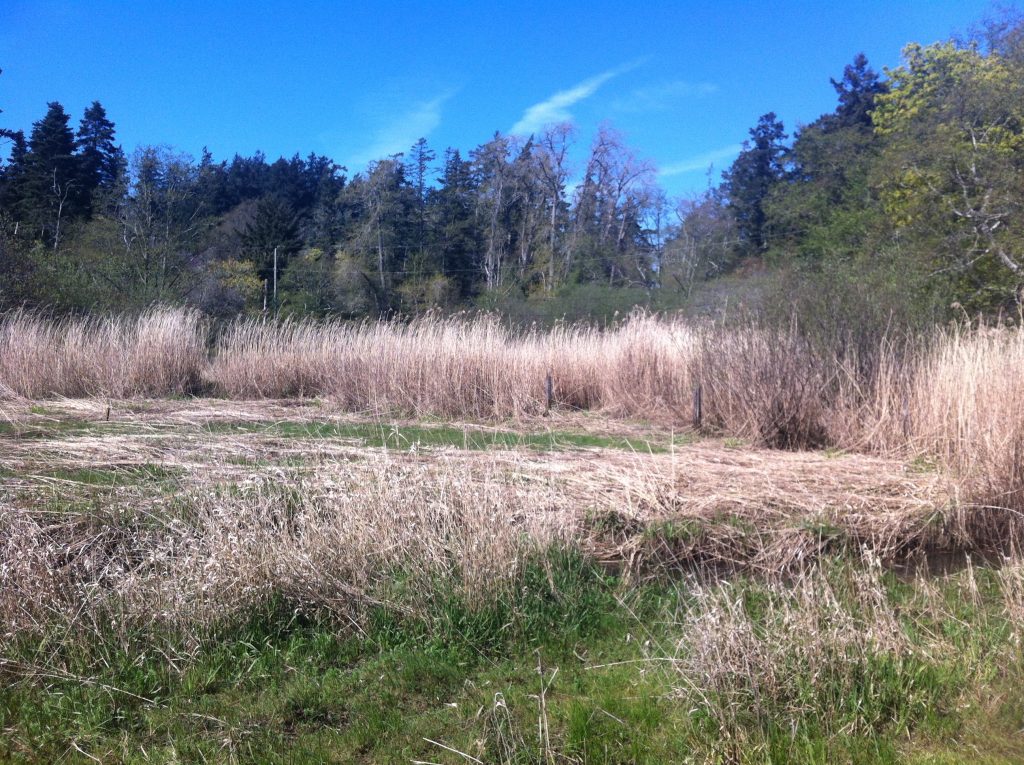
(http://metchosinmarine.ca/gf/triglochin-maritima/)
NOTE: I have updated this 2015 post in order to make it appear closer to the other mason bee information

(http://metchosinmarine.ca/gf/triglochin-maritima/)
Once the temperatures are up on sunny days, cocoons placed out near their prospective homes will start cutting their way out of the cocoons and fly off to get materials to fill their own tubes for the coming year. If there are remaining cocoons unopened after a week and a half of warm weather, then it may be worthwhile to check them for parasites. You can open a cocoon with a sharp box-cutter blade, carefully picking away at the tough cocoon. If the bees are healthy they will leave within a few minutes. You may encounter the following parasites and if so you should get rid of them. I have included some here that I not quite sure about as well. These parasites are natural, but when, as with many monocultures we concentrate many of one species together, the chance of pests finding a good place to thrive is increased.
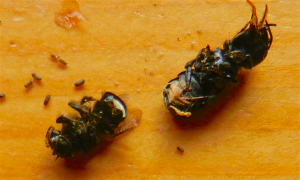
I have been posting my photos of different species I have encountered on the iNaturalist website. Many are species I have found here in the Metchosin Community.
https://www.inaturalist.org/observations?place_id=any&user_id=garryfletcher&verifiable=any
&
NOTE: I have updated this 2015 post in order to make it appear closer to the other mason bee information
I will use this page to mount pictures sent back by customers who have made their own houses out of recycled materials or have set up experiments to test the materials.
The following is from the Goldstream Gazette, March 16, 2021
A 2017 study found a 70 per cent decline in insect biomass over 27-year period in Germany
An entomologist has teamed up with 19 rural Metchosin homeowners to learn more about Greater Victoria’s insect volumes and see if the region’s trends match concerning ones emerging globally.
Neville Winchester, a University of Victoria professor and conservation biologist, receives around half a million flying insects that get collected from Metchosin properties every year. His study started in 2018 and will need about 10 years before he can start identifying the trends of what’s happening to insect biomass here.
“It’s really a biodiversity-driven project,” Winchester said. “Biodiversity is important to maintain ecosystem functioning and provide ecosystem services.”
The project was inspired by a 2017 study that found insect biomass had declined by 75 per cent over a 27-year period in 63 of Germany’s protected natural areas.
READ: Scientists decry death by 1,000 cuts for world’s insects
“We decided, ‘Hey we should start our own project and see if this is happening here in B.C.,’” Winchester said.
Metchosin was picked because of its “intact” natural areas and the interest from residents. Passive flight interception traps are set up to catch and collect flying insects. The citizen scientists then deliver the collections to Winchester every two weeks from May to October. The researcher splits the insects into about seven different groups and weighs the collections.
Winchester is establishing a baseline that will be key to seeing any trends that emerge over time. “Is it declining, is it staying somewhat stable or is it increasing?” he said.
Local insect populations are vital to the food we eat, the researcher said. “If insects started to drop out that were pollinators, who would pollinate food crops? If insects are dropping out, then that is not a good thing, so what are we doing to cause that or are there things we can be doing to reverse that.”
READ: Lack of bees, pollination limiting crop yields across U.S., B.C., study finds
The study is taking variables like weather, elevation and the area’s plant types into account. Winchester says a combination of factors will likely impact the insect population trends.
The professor meets regularly with each homeowner involved to talk about data he’s getting from their properties. Winchester said the Metchosin residents’ enthusiasm for the project means it’ll likely keep going for many years.
“They’re interested in the results and they’re interested in what’s happening on their property and what’s happening, in general in the district,” he said.
Winchester has spent much of his career in the canopies of massive old growth forests around Vancouver Island and the world — researching insect species and their ecological impact. The creatures may be small, but the role they play is not.“I think (people) care about it and they certainly should care about it.”
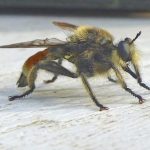 See an earlier story on this https://www.goldstreamgazette.com/news/new-uvic-study-to-track-decline-of-insects-in-metchosin/https://www.goldstreamgazette.com/news/new-uvic-study-to-track-decline-of-insects-in-metchosin/
See an earlier story on this https://www.goldstreamgazette.com/news/new-uvic-study-to-track-decline-of-insects-in-metchosin/https://www.goldstreamgazette.com/news/new-uvic-study-to-track-decline-of-insects-in-metchosin/
There are various values in the commercial community in regards to increasing the presence of Mason Bees as pollinators. Some items for growing Mason bees currently on the market tend to appeal more to the human than the bee, and people are willing to pay for these.
However in order to increase the populations of Mason Bees for our interests in pollination of our plants, more emphasis could be placed on providing homes that bees find favourable for their sole purpose: that of increasing their progeny.
At recent “Seedy Saturday” events, I have been encouraging people to use recycled materials to build houses and then to send back pictures of what type of structure they have come up with. Below are a few examples for a start.
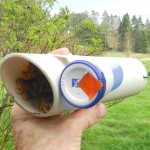
I do have available for sale several of these 2 inch water pipes with 2 dozen + tubes inside for $15.00.
NOTE: I have updated this 2016 post in order to make it appear closer to the other mason bee information
ARCHIVAL: This post has been re-dated from 2016 in order to position it closer in the blog to Mason Bee Information
NOTE: I have updated this 2015 post in order to make it appear closer to the other mason bee information
Mason bees for sale at $6.00 per dozen:
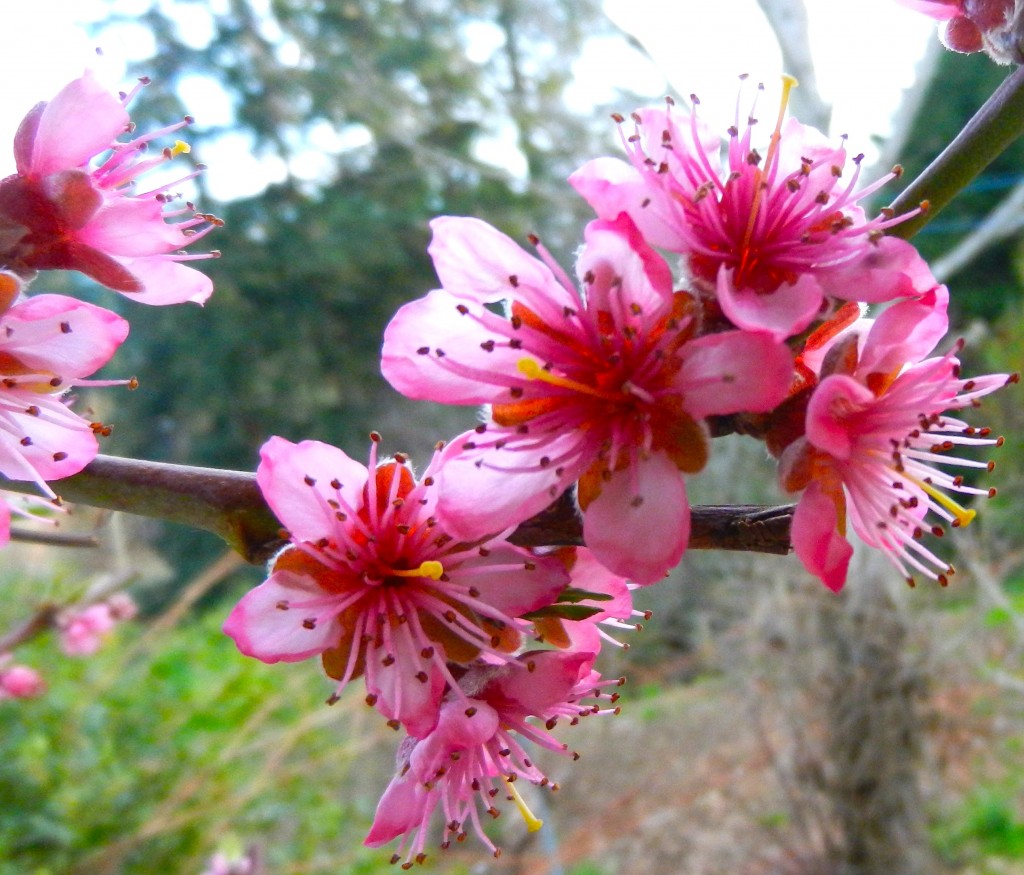
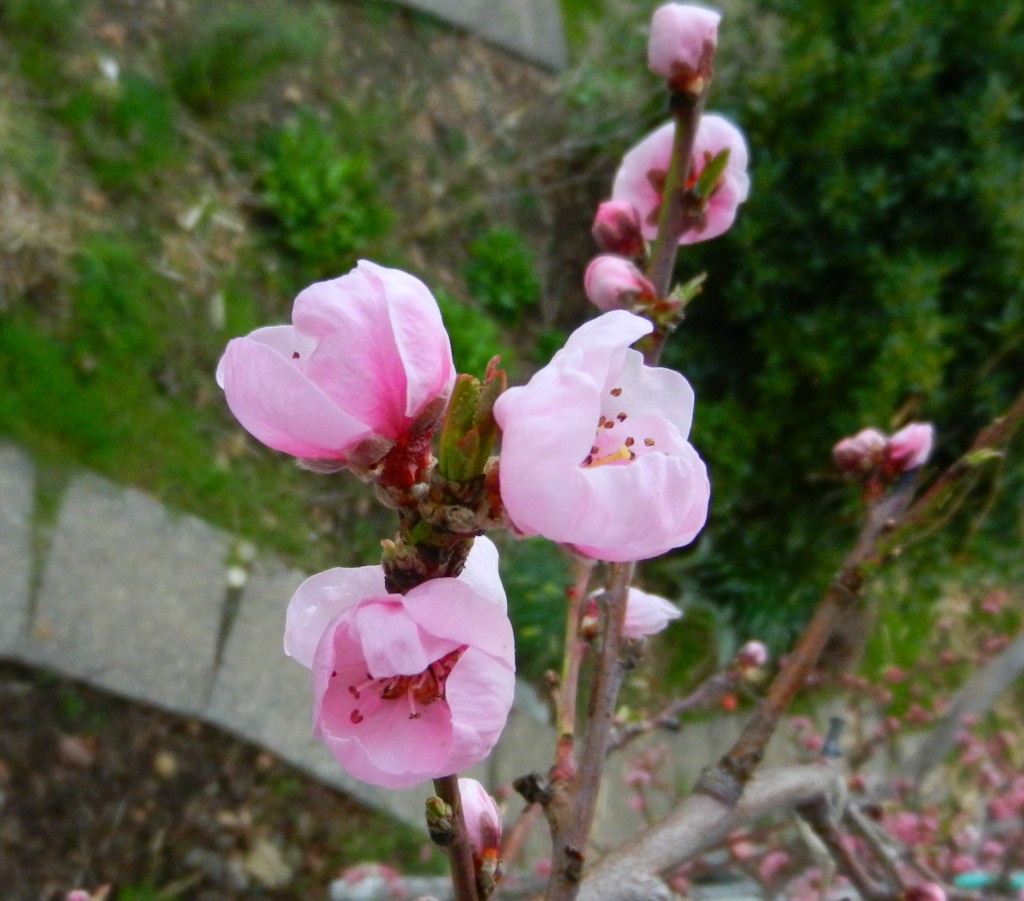
I have put out my first set of Mason Bees from the refrigerator as the peaches and nectarines are in bloom. There are also a few honey bees working the flowers, but once the Mason bees are active, they are much more efficient at pollinating than honey bees.
I have produced away more of these cocoons than I need for my garden and orchard so see this page for information on purchasing mason bees: https://www.gfletcher.ca/?p=1
I am now selling mason bee cocoons $6.00 per dozen which you can order and then pick up from my farm in Metchosin British Columbia.
e-mail garryf use the at sign gmail dot com, or use the e-mail form on the page linked above.
NOTE: I have updated this 2015 post in order to make it appear closer to the other mason bee information
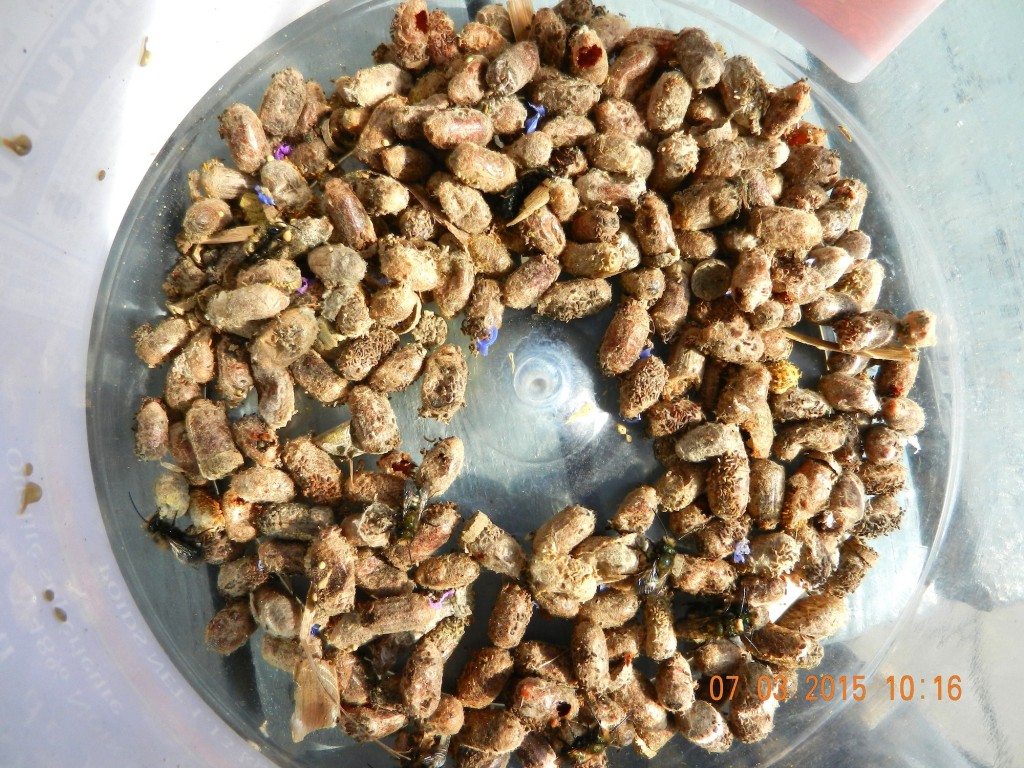
I am now selling mason bee cocoons which you can order and then pick up from my farm in Metchosin British Columbia.
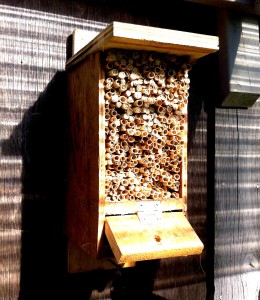 I raise my blue orchard bees in boxes like this, similar to a birdhouse without a front. The mud-filled tubes are complete, and they are still working on the open ones. The small compartment at the bottom, with a lid and hole in it, is for depositing a handful of cocoons into when I remove them from the refrigerator. This is done after their winter hibernation when I need pollinators for various fruit trees.
I raise my blue orchard bees in boxes like this, similar to a birdhouse without a front. The mud-filled tubes are complete, and they are still working on the open ones. The small compartment at the bottom, with a lid and hole in it, is for depositing a handful of cocoons into when I remove them from the refrigerator. This is done after their winter hibernation when I need pollinators for various fruit trees.
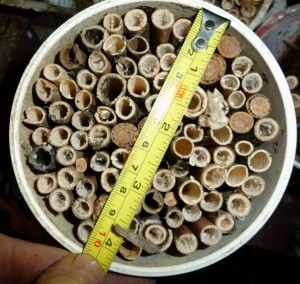 A section of 4 inch drain pipe can be used as a mason bee house also. A 5 cm. overhanging lip at the top keeps the water out. I also have a limited number of Phragmites reed tubes for mason bee homes . They average 6 inches in length and can be packed horizontally in any container as long as it is waterproof. Limited amount available at $5.00 per dozen.
A section of 4 inch drain pipe can be used as a mason bee house also. A 5 cm. overhanging lip at the top keeps the water out. I also have a limited number of Phragmites reed tubes for mason bee homes . They average 6 inches in length and can be packed horizontally in any container as long as it is waterproof. Limited amount available at $5.00 per dozen.
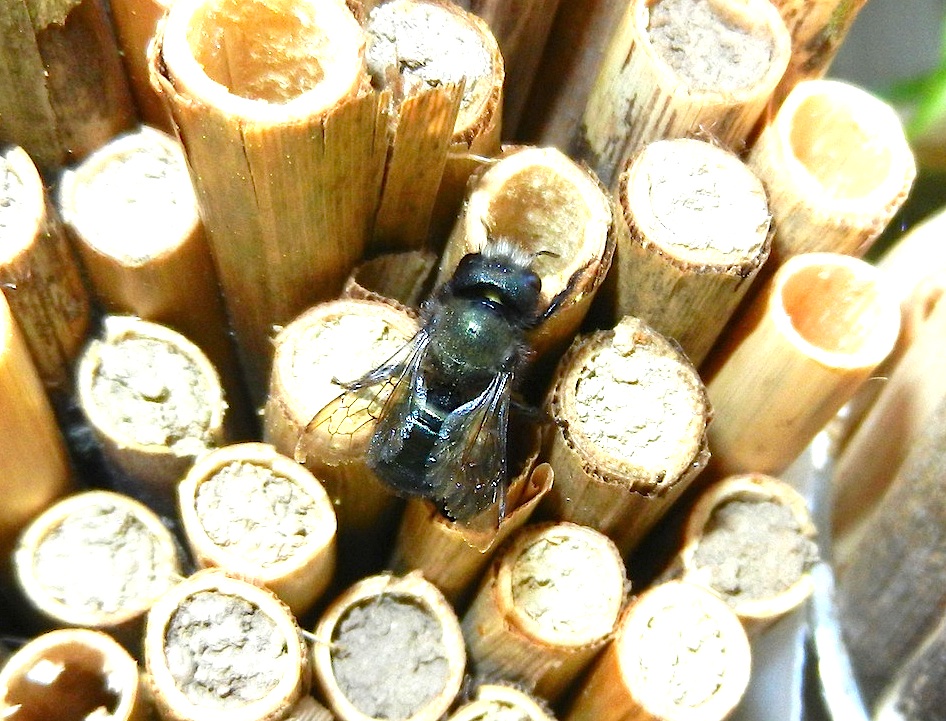
See other postings here on Mason Bees :
Contact: garryf use the: “at sign” gmail dot com